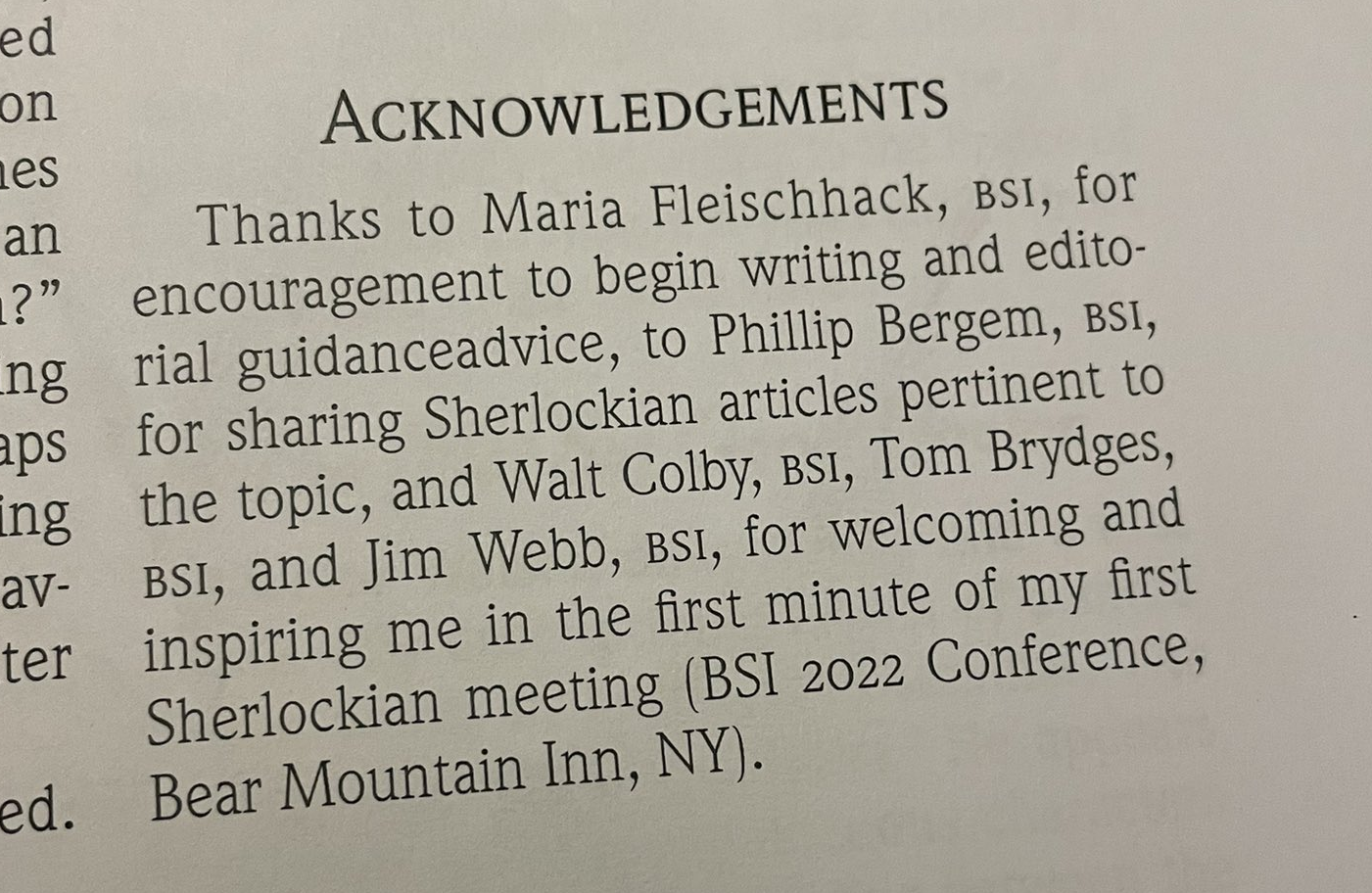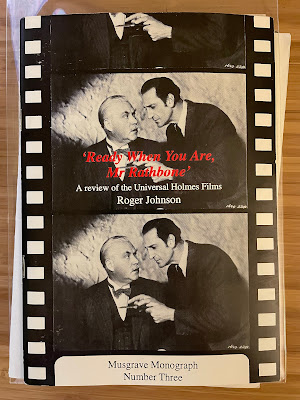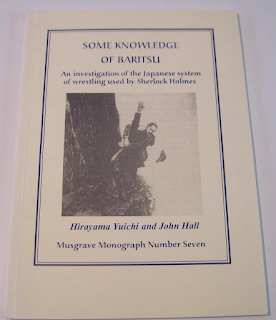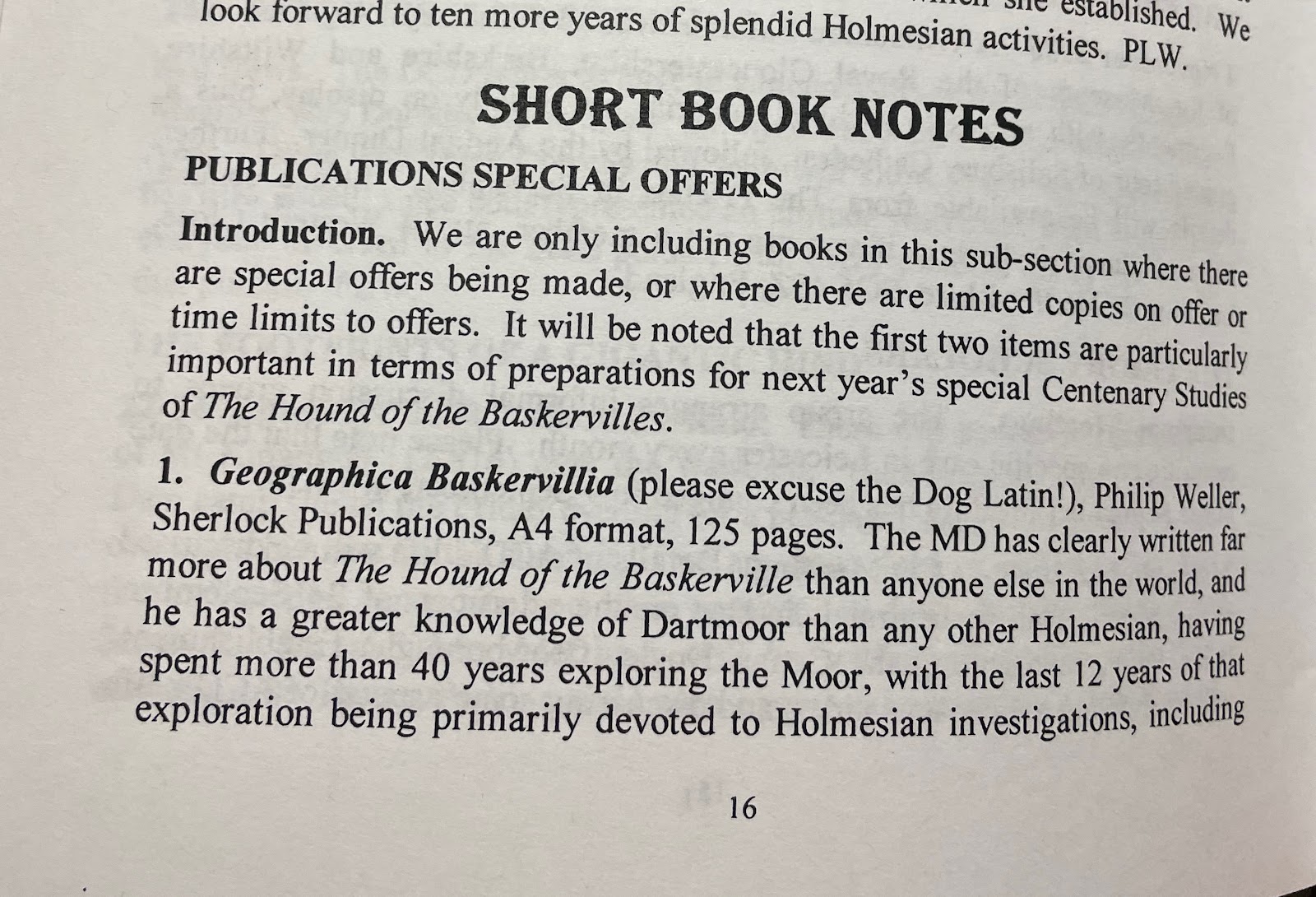This is a post that I absolutely intend to evolve into a Sherlockian article somewhere.
The BSI International Series book "Australia and Sherlock Holmes" (https://bakerstreetirregulars.com/2009/01/04/australia-and-sherlock-holmes) contains an introduction by Bill Barnes and Doug Elliott highlights a wonderful Australian Sherlockian event - one of the first Sherlockian gatherings ever!
The monthly Strand Magazine contained a delightful section titled 'Curiosities' that printed a range of submitted photos and anecdotes from readers. The August 1904 issue of the Strand leads its Curiosities section with a Sherlockian submission:
Curiosities
WHAT IS THE NAME OF THE MINE? Some miners in Australia have adapted the cipher of "The Dancing Men" given in the Sherlock Holmes story published in THE STRAND MAGAZINE for December, 1903, and have spelt out the name of their mine as shown in the photograph. Can our readers give the name of the mine? The photograph was sent to Sir A Conan Doyle, Undershaw, Hindhead, Haslemere.
Some very nice Sherlockian work has taken place around this photograph. A search of subsequent issues of The Strand Magazine did not unearth a follow-up to this article providing the answer.
The excellent Passenger's Log journal first published two Sherlockian pieces on this photograph, in issues 6.3/4 (May/August 2003) and 7.1 (October 2003). These articles first examined the human cipher, showing that they people corresponded to 'LACESIGE'. There was no 'K' present in the original canonical cipher, and it is assumed a hard 'C' was substituted providing us with 'LAKESIGE'. The 'G' is in fact meant to be a 'D', with the two letters have mirrored cipher symbols. And so we have 'LAKESIDE'.
Discussion in the Passenger's Log articles in 2003 next turn to where this mine could be. There was a mining town or settlement of Lakeside near Kalgoorlie in Western Australia (which was a very active gold mining centre in 1903), and it was also found that a mine in Ballarat, Victoria was called Lakeside.
More recently, the 'Baker Street Almanac' issues (which can be freely read here at http://www.greenbag.org/almanacs/BS/bsa.html) have included an annual update of activities from 'other' countries. The report for Australia in 2019 and 2020 by Bill Barnes makes a more categorical statement that "there was indeed a gold mine named Lakeside in 1903, near Kalgoorlie in Western Australia."
The articles also pointed out that the photograph represented one of the earliest known organized Sherlockian events. It also represents one of the first every Sherlockian photographs. If we look closely at the Strand article, we see one extra detail:
"From a Photo by H. Grose."
Who was H. Grose? If we can identify the photographer, we should be able to confirm the location of the mine.
While a fuller summary will ultimately be written up, the answer is that our photographer is Henry Hermon GROSE (sometimes spelt Herman). Around the time the photograph was mailed to ACD (early 1904), the following advertisement was placed:
Kalgoorlie Miner (WA : 1895 - 1954)
Mon 19 Oct 1903
Henry photographed under the name "H. H. Grose", and his studios in the Western Australian gold-mining town of Boulder (adjacent to Kalgoorlie) were immediately next to the now-ghost-town of LAKESIDE. In 1946, to location of Lakeside was officially re-named to Lakewood. The Kalgoorlie region was harsh and remote, established during the 1890s. How harsh and remote? Here is Lakewood (Lakeside) today from Google Maps Satellite:
Henry Grose, our photographer, was born in Adelaide (South Australia) in 1874. In 1895 he arrived in Fremantle (near Perth) from Adelaide on the ship 'Rockton', and may have headed straight for Kalgoorlie/Boulder which was in the early day of a gold rush. In 1901 he was in Boulder, as the announcement of his wedding and confirmation of his wedding shows:
The Evening Star (Boulder, WA : 1898 - 1921)
Fri 4 Jan 1901
In 1901 a book of panoramic photographs called "Boulder city and views around West Australia's great gold centre" was published by Orr's Emporium, using photographs taken by Grose. A newspaper article described the book thus: "The panoramic views... are probably the best ever taken in the district, and the other photographs all bear testimony to the skill of Mr. Grose".
Critically, Grose had many photographs of mines, batteries (used for crushing quartz to extract gold), and employees of mines, published in newspapers - the first in 1899 and the last in 1903 (with one exception of a garden photo in 1907). These published photos are all labeled with the "H. H. Grose" credit, and include at least one photograph of mines at Lakeside (the Leviathan Battery and Cyanide Plant, Lakeside):
Kalgoorlie Western Argus (WA : 1896 - 1916)
Tue 22 Apr 1902
Other photos of workers at the Leviathan by Grose may include our Sherlockians!
It appears that shortly after Grose took the 'Dancing Miners' photograph, he went out of business and became bankrupt in 1906. Grose may have abandoned commercial/professional photography at this stage - there are no further references to his photography, and some possible references to working in mines. It's also evident that Grose was a mason from notices in the newspapers, and a member of the Surface Workers Union (a mining union).
Henry Grose died in July 1918, aged 44, and was removed from his home at No. 1980 Vivian-street, Boulder and buried at the Boulder Cemetery. There is no record of a headstone. Henry had at least five children, two of whom were 'deaf-mute'.
I would be very happy to hear from anyone who comes across this blog post, with more information, or photographs taken by H. H. Grose of Boulder.





































